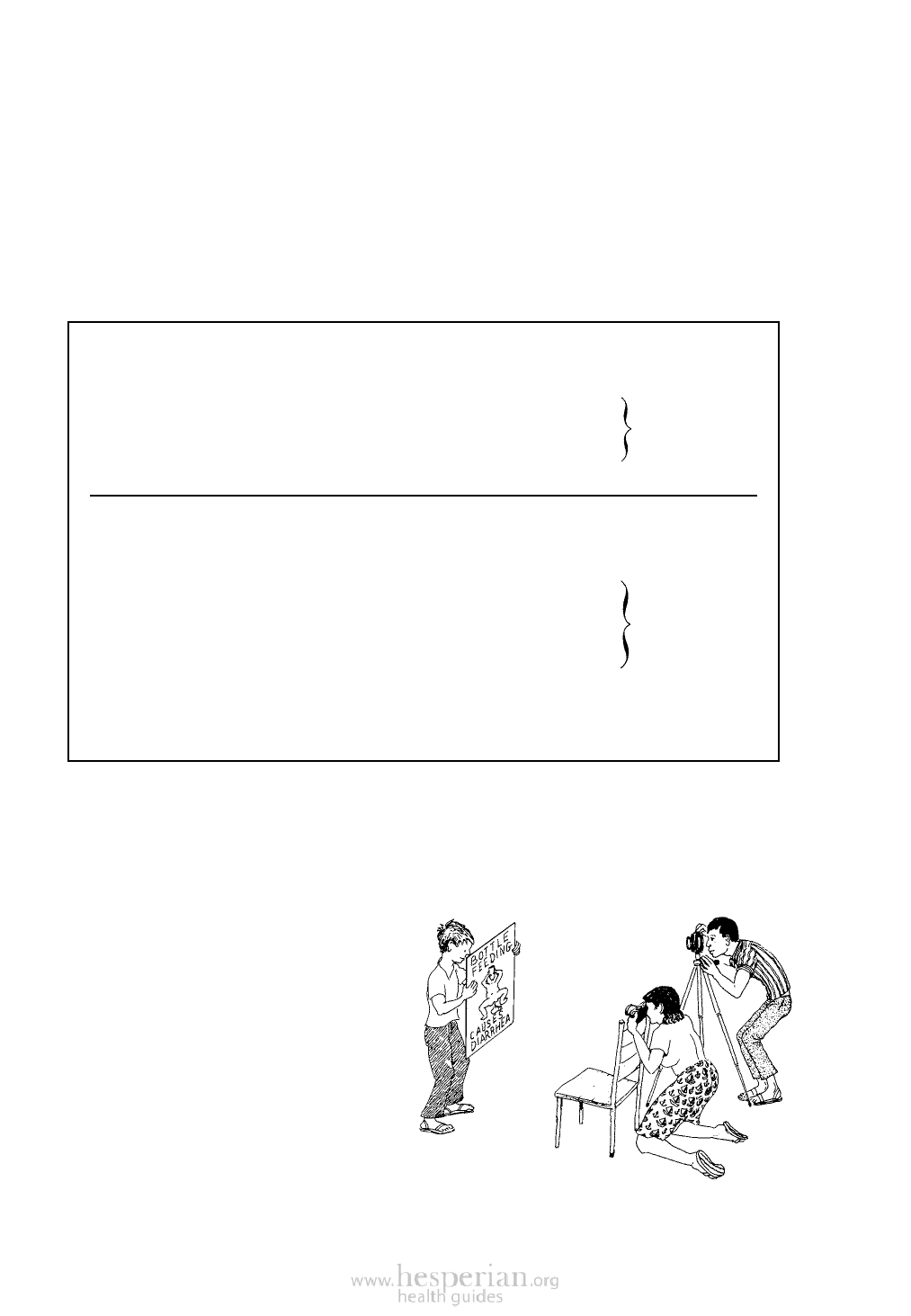
12-18
How to get better photos with your camera
In this book we cannot explain how to use different cameras. You will want
to read an instruction book or, better still, to learn from someone who has
experience.
Here are just a few suggestions for getting good quality pictures.
1. Film speed (This is important for film cameras, but not digital cameras or cell phone
cameras)
Fast film
gives less
blurring
but coarser
quality
(grain).
Use faster film (ASA rating above 200) when
photographing . . .
• indoors
• where the light is poor
• or when the subject is moving fast
except when
using flash
close up
Slow film
may give
more blurring
(if camera
moves), but
finer quality
(less grain) and
better color.
Better for
enlargements.
Use slower film (ASA rating below 200) when
photographing . . .
• in direct sunlight
• in a very well lighted place
• or when using flash close up
(within 7 to 10 feet)
when subject
is still or
moves slowly
Sharper, more detailed pictures usually can be made by using slower film in good
light—but only if the camera is kept steady.
2. Keeping the camera steady
For sharp pictures, hold the camera
as steady as you can. If possible, use
a tripod. Or rest the camera on a wall
or chair, to keep it from moving.
If possible, when using a film
camera, use a shutter speed no
slower than 1/125 second. If you
must take it slower (1/60 second),
try to rest the camera on something
steady. Pictures taken at 1/30 second
or slower are very hard to keep from
blurring unless you use a tripod.
Keep the camera as
still as you can.